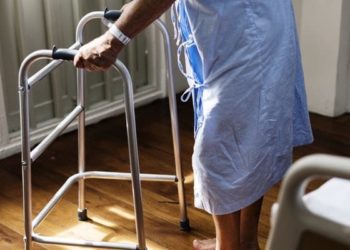Risk factors for blood vessel rupture during vascular access intervention therapy for hemodialysis patients
1. In vascular access intervention therapy (VAIVT) for hemodialysis patients, patient factors for vessel rupture include lower BMI, fewer prior VAIVT procedures, and shorter access vintage.
2. Hemodynamic risk factors for vessel rupture found on ultrasound imaging include lower blood flow quantity, higher resistance index, and lower brachial artery flow volume.
Evidence Rating Level: 2 (Good)
Vascular access for hemodialysis patients, including arteriovenous fistulas (AVFs) and arteriovenous grafts (AVGs), can have high failure rates due to thrombosis or stenosis, with 1-year patency rates of 86% and 51% for AVF and AVG respectively. Therefore, vascular access intervention therapy (VAIVT), also known as percutaneous transluminal angioplasty, is used to maintain vascular access. There can be risks associated with VAIVT though, particularly vessel rupture. This retrospective cohort study examined the risk factors associated with vessel rupture in VAIVT, including hemodynamic factors based on ultrasound imaging. This was a single-centre study based in Japan from 2019-2021, which included patients receiving VAIVT with ultrasound imaging. Indications for VAIVT included low blood flow, high resistance index, and venous stenosis more than 50%. In total, the study evaluated 628 VAIVT procedures, consisting of 83% male patients, and a median age of 73. There were 20 vessel ruptures (3.18%). On risk factors analysis, patients with ruptures had lower BMI (p = 0.043), underwent fewer VAIVT procedures (p = 0.006), and had shorter access vintage (p = 0.017). Hemodynamic risk factors on ultrasound included lower blood flow quantity (p = 0.005), higher resistance index (p = 0.011), and lower brachial artery flow volume (p = 0.018). Overall, this study demonstrated several patient and hemodynamic risk factors associated with risk of vessel rupture in VAIVT procedures.
Click to read the study in PLOS
Image: PD
©2023 2 Minute Medicine, Inc. All rights reserved. No works may be reproduced without expressed written consent from 2 Minute Medicine, Inc. Inquire about licensing here. No article should be construed as medical advice and is not intended as such by the authors or by 2 Minute Medicine, Inc.







